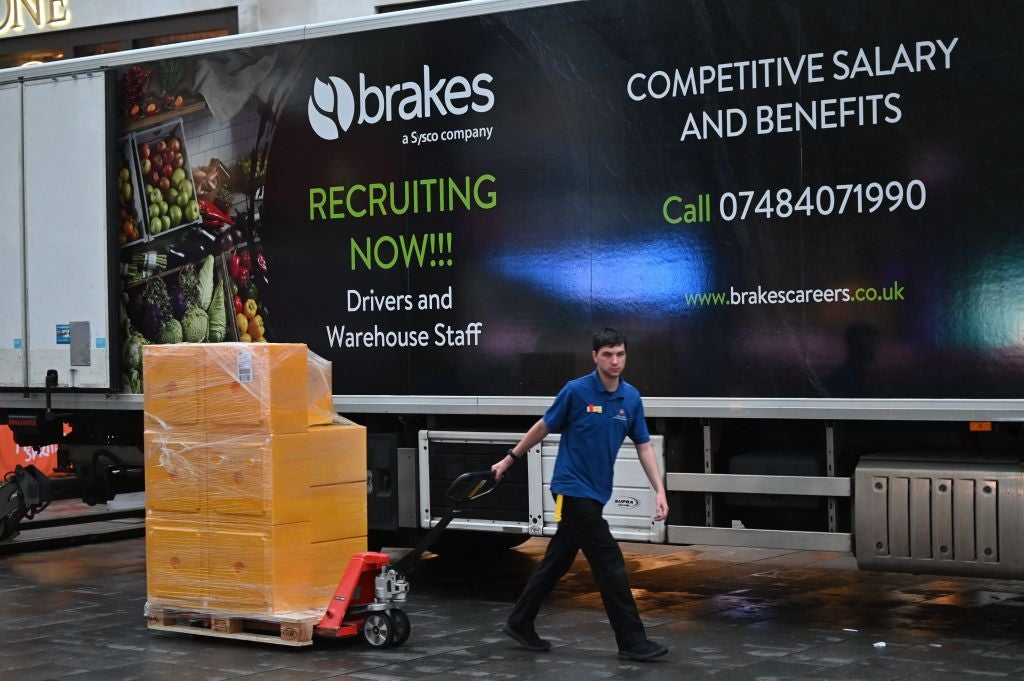
After months of shortages – first on supermarket shelves and later at the fuel pumps – the UK’s food supply chains are set to be a somewhat unconventional discussion point at many a Christmas table, given that concerns are being voiced over the availability of some of the traditional favourites. As the UK enters 2022 with uncertainty still clouding Brexit and a new Covid-19 variant spreading, consumers are likely to continue to suffer the brunt of food supply chain disruptions.
The trifecta of Covid-19, Brexit and labour shortages has turned the weekly shop into an endurance test for many. According to a survey conducted by the Office of National Statistics (ONS), 17% of buyers could not find essential food items they needed on a weekly basis on 10-18 November. The percentage went up to 24% for “other food items”.
Between the weeks starting 8 September 2021 and 8 November 2021, an average of 42.5% of buyers did not find everything they needed, from essential food items to fuel and medicine.
An avoidable strain on the UK’s food supply chains?
The ONS survey looked at the disruptions in the UK from September 2021 onwards, but supply chain issues have taken place since the start of 2020, as buyers fought to buy essential items such as painkillers and toilet paper in the first weeks of lockdown, and then struggled to find fresh fruit as supply chains broke down in the early months after the final Brexit deal had been signed.
Very few of these items have actually been in short supply – as has been the case even in the months covered during the ONS survey – but there has been a complex distribution conundrum.
However unpredictable the obstacles caused by the Covid-19 pandemic, part of this strain on the UK’s food supply chains could have been avoided, according to James Bielby, CEO of the Federation of Wholesale Distributors.
“If there had been more labour, that might have made a difference, but it is not just limited to drivers. It is also warehouse staff as well,” says Bielby, who adds that the ageing HGV driver workforce should have been predicted and staff shortages in other areas could have been mitigated by increasing long-term visas. He says that the three-month visas currently in place are “not really long enough as an incentive for people to want to come here”.
With a bigger labour pool, UK food supply chains would be more resistant to market shocks such as the uncertainties of Brexit or the Covid-19 pandemic, as not having enough staff makes it difficult for manufacturers to get enough stock, says Bielby.
Ways that manufacturers have adapted to overcome food supply chain hurdles include reducing their ranges on offer and product complexities, explains Nilpesh Patel, a partner in the consumer goods practice of OC&C consultancy in London. However, moves such as these only provide a short-term solution, he adds.
Brexit and the challenges ahead
These food supply chain disruptions are not just for Christmas, however. Indeed, 2022 comes with its own set of additional hoops to jump through to avoid further food supply chain disruptions.
In January 2022, full custom controls will be introduced as part of the UK’s exit from the EU, which Bielby expects to prove challenging. Covid-19 will continue to be an issue, he adds, saying: “We don't know what is going to happen with the various strains. There are going to be more lockdowns, more restrictions on the economy, which is clearly going to cause problems as well.
“The problems are only going to get worse. We are going to see a lot of inflation and we are going to see continuous shortages of labour.”
To future-proof the UK’s food supply chains, Bielby says that the government could go some way towards plugging the skills shortage by helping with incentives and creating temporary visas of at least 12–24 months. He also stresses that the border problems relating to Northern Ireland are likely to remain problematic.
For Patel, securing UK supply chains requires a “two-pronged approach”. “First, improving efficiency by increasing automation [from farms to factories], and by using technology to drive more accurate forecasting to reduce waste through the value chain,” he says.
“Second, attracting and retaining workers, which is partly about pay but also about improving conditions and making food and drink an attractive place to work.”
In the short term, it seems like consumers will have to "deal with slightly less choice than they are used to, as well as price increases driven by broader input cost inflation", concludes Patel.
Experts and industry bodies have been voicing their concerns for some time now, and few seem satisfied that the UK will enter the first few months of 2022 with strong and reliable food supply chains. Indeed, the additional Brexit-induced hurdles on the horizon mean that the issues will likely get worse before they get better.



